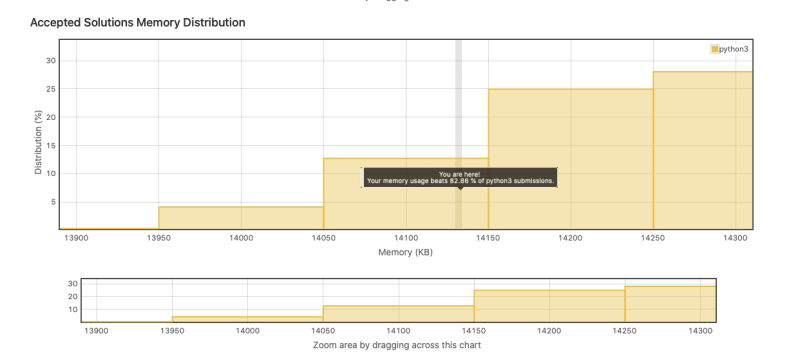The Problem
Given two sorted integer arrays
nums1andnums2, mergenums2intonums1as one sorted array.The number of elements initialized in
nums1andnums2aremandnrespectively. You may assume thatnums1has enough space (size that is equal tom + n) to hold additional elements fromnums2.
Example 1:
Input: nums1 = [1,2,3,0,0,0], m = 3, nums2 = [2,5,6], n = 3
Output: [1,2,2,3,5,6]
Example 2:
Input: nums1 = [1], m = 1, nums2 = [], n = 0
Output: [1]
Constraints:
0 <= n, m <= 2001 <= n + m <= 200nums1.length == m + nnums2.length == n-109 <= nums1[i], nums2[i] <= 109
My Tests
import pytest
from .Day11 import Solution
s = Solution()
@pytest.mark.parametrize(
"nums1,m,nums2,n,expected",
[
([1, 2, 3, 0, 0, 0], 3, [2, 5, 6], 3, [1, 2, 2, 3, 5, 6]),
([1], 1, [], 0, [1]),
([0], 0, [1], 1, [1]),
],
)
def test_merge(nums1, m, nums2, n, expected):
s.merge(nums1, m, nums2, n)
assert nums1 == expected
My Solution
from typing import List
class Solution:
def merge(self, nums1: List[int], m: int, nums2: List[int], n: int) -> None:
"""
Do not return anything, modify nums1 in-place instead.
"""
i = len(nums1) - 1
while m >= 1 and n >= 1:
if nums1[m - 1] < nums2[n - 1]:
nums1[i] = nums2[n - 1]
n -= 1
else:
nums1[i] = nums1[m - 1]
m -= 1
i -= 1
nums1[:n] = nums2[:n]
Analysis
My Commentary
This one was straightforward enough. The fact that we are supplied n and m is a hint that we need to do more than simply merge the 2 lists to get an optimal solution.
Because we know the lists are sorted we can use that to do this all in one pass and in place. Starting at the end of each list (then end of nums1 is n -1 even though len(num1) == n + m. Then we take the largest number and put it in the buffer space of nums1 which we index with i starting at len(nums1) - 1.
The very last step is to fill out nums1 with any values we didn't catch from nums2.




Top comments (0)